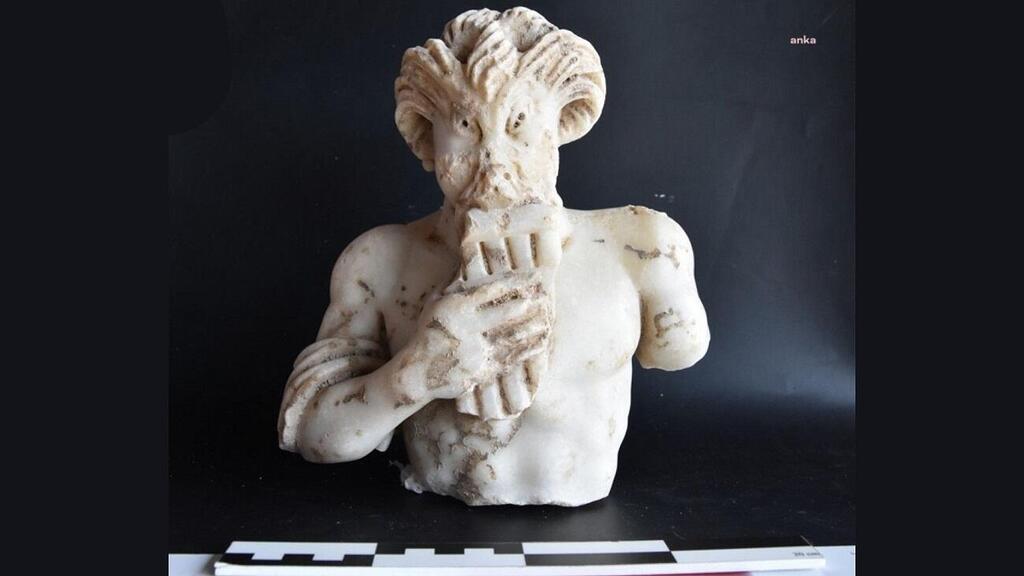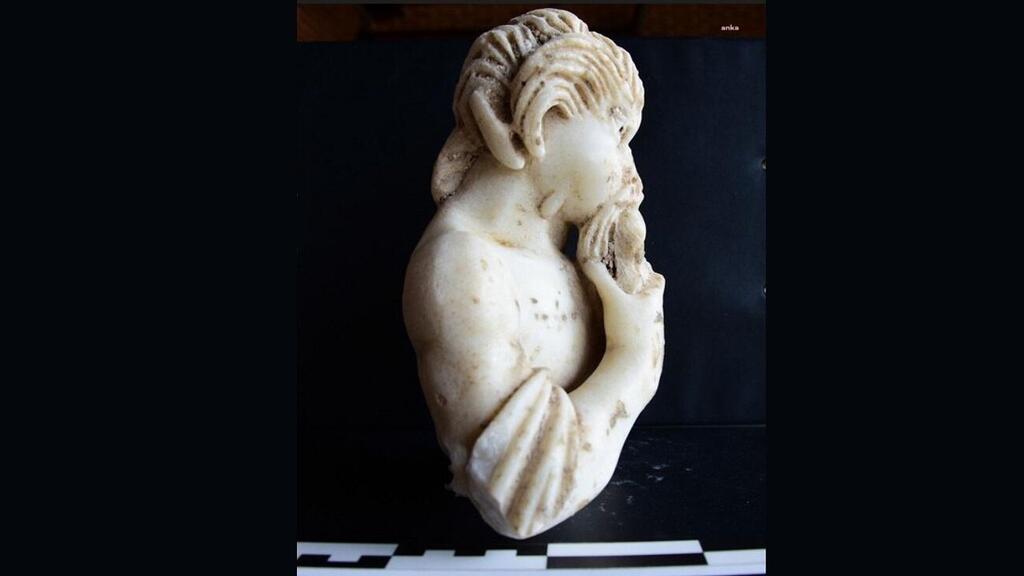A marble statue depicting the Greek god Pan – the god of the wild, shepherds and flocks, rustic music and merriment, and companion of the nymphs – was discovered at an archaeological site in Istanbul.
Archaeologists excavating the ruins of an ancient Christian church in Istanbul uncovered a pagan statue of Pan, known for being part man (upper body) part goat (lower body and horns), and playing a flute called the panpipes (a musical instrument that he invented).
3 View gallery


The statue of the Greek God Pan discovered near a church in Istanbul
(Photo: Istanbul Metropolitan Municipality)
The excavations took place at the site where the Church of St. Polyeuctus stood, which was built between 524 AD and 527 AD during the reign of Justinian I, the former Byzantine Emperor who ruled at a time when the city was a center of Christianity. It was one of the grand churches in Constantinople, as Istanbul was called before its conquest by the Ottoman Turks in 1453.
The new discovery comes just a few weeks after underground rooms and a tunnel were reopened on the church's premises with the aim of transforming the site into an archaeological tourist attraction.
Istanbul Municipality Deputy Secretary General Mahir Polat said that the statue was discovered on June 1 on the northwest side of the church, approximately 2.6 meters below the ground's surface. The height of the marble statue is less than 20 cm, with only the head, upper part of the body, and one hand which is holding the panpipe intact.
According to assessments, the statue was created during the Roman Empire, before the founding of Constantinople in 330 AD as the new capital, Polat reported to the scientific news website "Live Science."
3 View gallery


The statue of the Greek God Pan found where the Church of St. Polyeuctus stood
(Photo: Istanbul Metropolitan Municipality)
In Greek mythology, Pan was considered the god of shepherds and their flocks, who also represented pastoral music and merriment. He was seen as the embodiment of nature, which, on one hand, attracts and entices with his calming qualities, but can quickly become wild and dangerous. In Roman mythology, the god was known as Faunus. According to Greek mythology, Pan fell in love with the nymph (a creature in Greek mythology) Syrinx, but she did not reciprocate his feelings and turned to other gods for help.
In order to distance Pan from the nymph, the gods transformed her into a bunch of marsh reeds the very moment Pan spread his hands to grab her. Pan was very disappointed upon realizing that he was embracing shrubs instead of Syrinx's body, but once he shook the shrubs, they gave off a beautiful melody. The god then cut the marsh reeds into different lengths and joined them side by side in decreasing order, creating the first set of panpipes, which he named syrinx.
Pan’s name is the basis from which the word "panic" is ultimately derived, as it is explained to originate from the sudden fear experienced by those who encountered him in a desolate area or from the fear that arose from hearing strange and terrifying sounds that were attributed to the god Pan. Therefore, the shepherds made sure to keep quiet in order not to provoke his wrath, which could lead to the scattering of their flocks.


